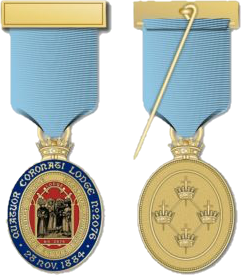The 47th Proposition of the 1st Book of Euclid as Part of the Jewel of a Past Master
By: Bro. Thomas Greene, L.L.D.
Magenny, Kildare.
Extracted from: Ars Quatuor Coronatorum, the Transactions of Quatuor Coronati Lodge No. 2076, UGLE vol. 14, 1901. pp. 27-30
Reproduced with kind permission of Quatuor Coronati Lodge 2076

The Jewel of the Past Master in Scotland consists of the Square, the Compasses, and an Arc of a Circle: In Ireland of the Square and Compasses with the capital ‘G’ in the centre: In England for 85 years, at least, it has been the Square with the 47th Proposition of Euclid pendent within it.
An Irish poet wrote:
Trath is one, and so is light,
Yet how many shades of it.

Freemasonry itself might be looked on as exemplifying unity without monotony;
So let it not be supposed that because they are different there is anything exclusively English, or Irish, or Scotch, about the Past Master’s Jewel in each case;
All are beautiful links in the chainwork of continuation from Operative to Speculative Masonry;
All remind us that the master of an Operative Lodge worked out his plans by that branch of science to which we give the general name of ‘Geometry,’ and which is represented in the Irish Jewel by the Capital ‘G,’ which along with the 47th Proposition were in use both in England and in Ireland probably before 1723;
And if we make a comparison at all, to my mind it should be in favour of the ‘G’ as, primarily at least, standing for Geometry,’ the basis of all Operative Masonic Work, and including that 47th Proposition with which I am about to deal.
The Square is introduced to the Entered Apprentice as one of the three Great Lights of Freemasonry, to the Fellowcraftsman as one of the working tools of his Degree.
It is also one of the Jewels of the Lodge, and the special Jewel of the Master of the Lodge.
It is probably the most important tool of a Mason, whether an Operative or a Speculative one, for it connects and more or less includes the Level and the Plumb Rule, and it is the only tool by which the rough Ashlar can be prepared and tested; and unless the ashlars are perfect the building cannot be built after any wise plan, or with strength, or with beauty.
It is used to form the rude and to prove the perfect mass, and therefore it is of the utmost importance that an implement on which so much depends shall be itself perfectly correct.
It is this last consideration especially which renders the 47th Proposition so appropriate an emblem of the Past Master.
The artificer employs the square to form the rude mass; the Master to prove the work; but whose duty is it to see that this most important tool is itself correct?
The most suitable person would seem to be the Past Master, he, having passed through the stages of using it and testing with it, would be most impressed with the necessity of its being correct.
By what mode can he ensure the correctness of the Square?
How can he ensure that the angle between the two limbs of the Square shall be truly a right or square angle?
There are many ways known to modern science whereby this can be done, but the most ancient, and perhaps the simplest, is by means of the 47th Proposition of the first book of Euclid:
And therefore the Past Master, one of whose chief duties it is to test the working tools, and who is supposed to have arrived at a complete skill in Freemasonry, wears it as part of his distinguishing Jewel:
Indeed the term Past Master is commonly used to describe anyone who is possessed of special knowledge in any particular department whatever.
This Proposition is known certainly for twenty-four centuries, and probably much longer, and by it we can prove that in a triangle, one of the angles of which is a right angle, the square of the side opposite the right angle is equal to both the squares on the sides containing the right angle:
It follows then that if we make any triangle in which the square of one side is equal to both the squares of the two other sides, then the angle opposite that side must be a true right angle,—the angle of a correct square.

In the English Book of Constitutions of 1723 this Proposition appears on the Frontispiece, and it was spoken of then as, ‘That amazing Proposition which is the foundation of all Masonry.’
IMAGE LINKED: wikimedia Attribution 4.0 International (CC BY 4.0)

The diagram shown represents it as used by English Masons nearly 100 years ago; you will see that in order to get a correct square angle it is only necessary to make a triangle the sides of which shall be in the proportion 3-4-5.
In connection with this it is of much interest to know that as the standard and symbol of perfection with Speculative Masons now is the Square, so this right angled triangle, which is almost identical, was with the Egyptians several thousand years ago the standard and symbol of perfection;
And they made it also the basis of all their measurements; they looked on it as the symbol of Universal Nature, the side;
4 being Osiris the male principle,
3 the female principle Isis, and
5 Horus the son, the product of these two principles;—
They said 3 was the first perfect odd number, that 4 was the square of 2 the first even number, and 5 was the result of 3 and 2. [1]
In Freemasonry, the Square is the Symbol of moral perfection: it is the Master’s duty to apply the perfect square of right and truth to the work of the subordinates;
But the far higher and greater responsibility rests on the Past Master of setting out, pointing out, and in himself exemplifying what Right in itself is, and what Truth is, of answering Pilate’s question, ‘What is Truth?’
True Speculative Masonry teaches a man, by the industrious application of the principles of Eternal Truth and Right to the untaught material of humanity, to shape its thoughts and actions so as to erect from it a spiritual building, on sure foundations, with intelligent purpose, and admirable to contemplate.
The Past Master represents one who has erected such a building; but his having done so places him under the responsibility of ensuring that those who are working for the same end shall not fail through want of his affording them, by precept and example, principles which have been put to the test and found to be those of absolute truth and correctness.
It will be said, why then be a Past Master and incur all this responsibility? but it is what one who lives through a Masonic life must come to, and is symbolic of what man is born to, whether he be a Freemason or not.
There is no man but eats more or less of the tree of knowledge of good and evil, and incurs the responsibility attached thereto;
No man can escape being not only the keeper of his brother who is his equal, but also the far greater responsibility of being the keeper of those who are beginners and learners:
And as they are influenced for good or evil, so will they be affected to the third and fourth generation.
But it may be asked how it is that while in Masonry and in human life all the wear and tear and the responsibilities seem to attach to the workers of the different grades, and to the overseers of the work, yet that on the Past Master who has risen through all the grades, and who seems to have earned the calm of smooth waters, free from anxieties, lies the greatest responsibility of all?
The answer, which is a serious one, is this, that while he was a learner his work was carried on in sight and hearing, and he was accountable for it to those above him who were themselves liable to err;
But that now, as a Past Master, both for his own work and the correctness of the rules of night which he supplies to the learners, he is accountable, not to Masons or to men, but to the Great Architect, the Grand Geometrician, the God of the Universe.

‘Squaring the circle’, from Michael Maier’s Atalanta fugiens, emblema XXI, 1618
IMAGE LINKED: wikimedia Attribution 4.0 International (CC BY 4.0)
I may bring before you two instances of the Square being treated in a symbolic way, long before Speculative Masonry existed ; especially as the suggestions were singularly like to ours.
Guillaume de Guileville, a Frenchman, who was born A.D. 1295 and died 1360, wrote a book called ‘Man’s Pilgrimage’ in which, in an imaginative ‘last will’ of Jesus Christ, one clause contains a bequest to mankind of the ‘Pax Triplex,’ ‘Triple Tranquillity,’ symbolized by P.A.X. so disposed on the stem and one limb of a Latin cross, which forms a right angle, as to ind’cate the whole duty of man —his love to God and to his neighbour, in this way,—A. stands for Anima, the soul;
X. Kristos, Christ, finally connected with the soul by love, but directly in the plumbline above it as superior; P. Proximus, a neighbour, properly on the same level, and also firmly connected by love, but not so nearly as to X., Christ, as indicated by the longer stem of the cross. [2]
The other instance came to light when, at the rebuilding of Baal’s Bridge, near Limerick, a brass square was found, inscribed with the date 1517, and with these words:

I will strive to live with love and care
Upon the level, by the square.
This was the sentiment of a purely Operative Mason, and it is still a fit sentiment for a Speculative one 400 years afterwards.
Footnotes
1. See the exhaustive paper on ‘The Great Symbol,’ by Bro. S. T. Klein, A.Q.C. x., p. 82 et seqq.
2. See W. H. Rylands, ‘Symbolism of the Square,’ A.Q.C. xiii., p. 28.
Recent Articles: symbolism
 Legends and Symbols in Masonic Instruction Explore the significance of Masonic legends and symbols in this insightful post. Discover how Freemasonry imparts wisdom through allegorical narratives and emblematic imagery, revealing profound moral and philosophical lessons. Unveil the deep connections between Masonic teachings and the broader quest for understanding life’s fundamental questions. |
 Discover the mystical significance of the number 33. From its mathematical marvels and artistic influence in numerology to its esteemed place in Freemasonry, delve into the history and power of this master number. Explore why 33 holds such profound meaning in various spiritual and philosophical traditions. |
 The Practice of Freemasonry - P1 Embark on a transformative journey with Freemasonry, where the exploration of your Center unlocks the Perfect Ashlar within. Through the practices of Brotherly Love, Relief, Truth, and Cardinal Virtues, discover a path of enlightenment and self-improvement. Embrace the universal creed that binds us in the pursuit of our true essence. |
 Discover the fascinating history and significance of the Warrant of Constitution within Freemasonry. Unveil the evolution of this crucial authorization, its role in legitimizing Lodges, and its lasting impact on the global brotherhood of Freemasons. Explore the intricate link it provides between tradition and modern practice. |
 Freemasonry: Unravelling the Complexity of an Influential Organization Mysterious and captivating, Freemasonry has piqued the interest of seekers and skeptics alike. With its intricate blend of politics, esotericism, science, and religion, this enigmatic organization has left an indelible mark on society. Prepare to delve into the secrets of Freemasonry and unlock its hidden depths. |
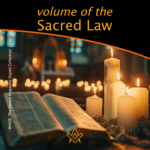 Unlocking the Mysteries of Freemasonry: In the hallowed halls of Freemasonry, a powerful symbol lies at the heart of ancient rituals and teachings—the Volume of the Sacred Law. This sacred book not only guides the spiritual and moral journey of Freemasons but also serves as a beacon of universal wisdom and enlightenment. |
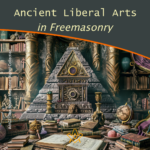 The Ancient Liberal Arts in Freemasonry Embark on a journey of self-improvement and wisdom with Freemasonry's guiding principles. Ascend the winding stairs of moral cultivation, analytical reasoning, and philosophical understanding. Embrace arithmetic's mystical properties and geometry's universal truths. Let the harmony of the universe inspire unity and growth. Discover the profound, hidden knowledge in Freemasonry's path to enlightenment. |
 Initiation rituals around the world are filled with fascinating elements and different images. One of them is that of darkness. When societies speak of darkness, they often mean a lack of knowledge, a lack of choice, or a symbol of evil. During initiation rituals, darkness is used to represent the initiate's lack of knowledge about the world, society, and initiation in general. It can also represent the initiate's inability to make a choice or endure a situation. Whether you have participated in an initiation rite or not, the meaning of darkness remains an intriguing concept worth exploring. Initiation rituals around the world are filled with fascinating elements and different images. One of them is that of darkness. When societies speak of darkness, they often mean a lack of knowledge, a lack of choice, or a symbol of evil. During initiation rituals, darkness is used to represent the initiate's lack of knowledge about the world, society, and initiation in general. It can also represent the initiate's inability to make a choice or endure a situation. Whether you have participated in an initiation rite or not, the meaning of darkness remains an intriguing concept worth exploring. |
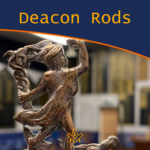 Masonic Deacon rods potentially trace their origins to Greek antiquity, symbolically linked to Hermes' caduceus. As Hermes bridged gods and mortals with messages, so do Masonic Deacons within the lodge, reinforcing their roles through ancient emblems. This connection underscores a profound narrative, weaving the fabric of Masonic rites with the threads of mythological heritage, suggesting the rods are not mere tools but bearers of deeper, sacred meanings that resonate with the guardianship and communicative essence of their divine counterpart, Hermes, reflecting a timeless lineage from myth to Masonic tradition. |
 The biblical pillars erected by Solomon at the Temple's porch, hold a profound place in history. These brass behemoths are not mere decorations; they are symbols of strength, establishment, and divine guidance. Explore their fascinating construction, dimensions, and the deep meanings they carry in both biblical and Masonic contexts. |
 Unlocking the Mind's Potential: Dive deep into ground breaking research revealing how simple daily habits can supercharge cognitive abilities. Discover the untapped power within and redefine your limits. Join us on this enlightening journey and transform your world! |
 Dive deep into the symbolic importance of the trowel in Masonry, representing unity and brotherly love. From its historical roots in operative masonry to its significance in speculative masonry, this article explores the trowel's multifaceted role. Discover its connection to the sword, the story of Nehemiah, and the Society of the Trowel in Renaissance Florence. Unravel the layers of meaning behind this enduring Masonic symbol. |
 Symbolism of The Builder's Jewel Batty Langley's "The Builder’s Jewel" (1741) is a visual masterpiece of Masonic symbolism, showcasing Langley's deep understanding of Freemasonry. The frontispiece highlights key symbols like the three pillars and the legend of Hiram Abiff, emphasizing Langley's dedication to Masonic traditions and teachings. |
 Unveil the mystique of the colour blue in Masonic symbolism. A hue evoking universal friendship and benevolence, its roots span ancient cultures, infusing Freemasonry's core values. This article explores blue's profound significance, guiding Freemasons towards wisdom and spiritual enlightenment. Discover the fascinating journey of this universal symbol. |
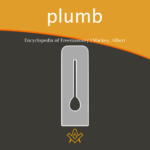 Discover the intriguing world of the plumb in Masonic symbolism with our in-depth analysis. Uncover its rich history, moral teachings, and significance in Freemasonry, guiding members on their path to truth, integrity, and justice. Immerse yourself in the captivating power of this symbol that shapes lives within the brotherhood. |
 Unlock the mysteries of Freemasonry with 'The Key,' a profound Masonic symbol. This seemingly simple instrument holds a deeper meaning, teaching virtues of silence and integrity. Explore its ancient roots, from Sophocles to the mysteries of Isis, and discover how it symbolizes the opening of the heart for judgment. |
 Unlock the secrets of the Freemasonry with The Blazing Star - a symbol that holds immense significance in their rituals and practices. Delve into its history, meaning and role in the different degrees of Freemasonry with expert insights from the Encyclopedia of Freemasonry by Albert Mackey. Discover the mystique of The Blazing Star today! |
 There is no symbol more significant in its meaning, more versatile in its application, or more pervasive throughout the entire Freemasonry system than the triangle. Therefore, an examination of it cannot fail to be interesting to a Masonic student. Extract from Encyclopedia of Freemasonry by Albert Mackey |
 The Hiramic Legend and the Myth of Osiris Hiram Abiff, the chief architect of Solomon’s Temple, is a figure of great importance to Craft Freemasonry, as its legend serves as the foundation of the Third Degree or that of a Master Mason. He is the central figure of an allegory that has the role of teaching the Initiate valuable alchemical lessons. Although his legend is anchored in biblical times, it may have much older roots. |
 This rite of investiture, or the placing upon the aspirant some garment, as an indication of his appropriate preparation for the ceremonies in which he was about to engage, prevailed in all the ancient initiations. Extract from The Symbolism of Freemasonry by Albert G. Mackey |
 The All-Seeing Eye of God, also known as the Eye of Providence, is a representation of the divine providence in which the eye of God watches over humanity. It frequently portrays an eye that is enclosed in a triangle and surrounded by rays of light or splendour. |
 What's in a Word, Sign or Token? Why do Freemasons use passwords, signs, and tokens? As Freemasons we know and understand the passwords, signs and tokens (including grips), which are all used a mode of recognition between members of the fraternity. |
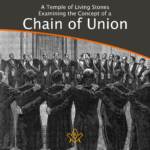 A Temple of Living Stones: Examining the Concept of a Chain of Union What are the origins of the Chain of Union? And how did they come about ? The answers may surprise some members as W Brother Andrew Hammer investigates, author of Observing the Craft: The Pursuit of Excellence in Masonic Labour and Observance. |
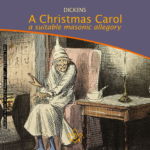 One of the best loved stories for the festive season is ‘A Christmas Carol’. A traditional ghost story for retelling around the fire on a cold Christmas Eve, it is a timeless classic beloved by those from all walks of life. Philippa explores the masonic allegory connections… |
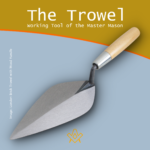 The Trowel - Working Tool of the Master Mason The Trowel is the symbol of that which has power to bind men together – the cement is brotherhood and fellowship. |
 Two Perpendicular Parallel Lines The point within a circle embordered by two perpendicular parallel lines, with the Holy Bible resting on the circle, is one of the most recognizable symbols in Freemasonry. It is also one which always raises a question. How can two lines be both perpendicular and parallel? |
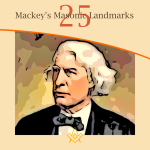 "The first great duty, not only of every lodge, but of every Mason, is to see that the landmarks of the Order shall never be impaired." — Albert Mackey (1856) |
 It is common knowledge that the ancient wages of a Fellowcraft Mason consisted of corn, wine, and oil. |
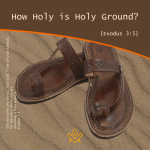 “Do not come any closer,” God said. “Take off your sandals, for the place where you are standing is holy ground.” Exodus 3:5 |
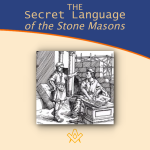 The Secret Language of the Stone Masons We know of Masons' Marks but lesser known are the 'argots' used by the artisans - in part 2 of a series on the social history of the Operative Masons we learn how the use of secret languages added to the mystery of the Guilds. |
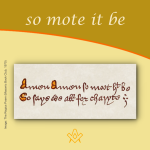 The phrase appears in the Regius Poem. It is customary in contemporary English to end prayers with a hearty “Amen,” a word meaning “So be it.” It is a Latin word derived from the Hebrew word - Short Talk Bulletin - Vol. V June, 1927, No.6 |
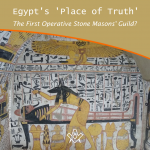 Egypt's 'Place of Truth' - The First Operative Stone Masons' Guild? Was ancient Egypt's 'village of the artisans' the first operative stone masons' guild? And was their use of 'identity marks' a forerunner of the Mason's Marks of the cathedral builders of the Middle Ages? Read on for some possible answers… |
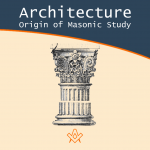 The Pieces of Architecture and the Origin of Masonic Study Discover the journey of the Apprentice – from Operative to Speculative. This journey has been carried out since the times of operative Freemasonry but today the initiate works in the construction of his inner temple. |
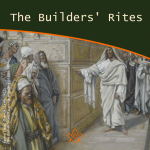 The Builders' Rites - laying the foundations operatively and speculatively The cornerstone (also ‘foundation’ or ‘setting’ stone) is the first stone to be set in the construction of the foundations of a building; every other stone is set in reference to this. |
 Applying the working tools to achieve our peculiar system of morality. |
 We take an in-depth look at the 47th Proposition of the 1st Book of Euclid as part of the jewel of the Past Master. |
 The Cable Tow: Its Origins, Symbolism, & Significance for Freemasons - Unbinding the significance of the cable tow. |
 We examine at one of the most impressive moments of the initiatory ceremony, a certain rite known as Circumambulation, and ask what is its meaning and purpose ? |
 So, what is the Level? And why do we use it in Freemasonry? |
 What is the mysterious pigpen or Masonic cipher that has been used for centuries to hide secrets and rituals? |
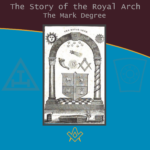 The Story of the Royal Arch - The Mark Degree Extracted from William Harvey's 'The Story of the Royal Arch' - Part 1 describes the Mark Degree, including the Working Tools. |
 Ashlars - Rough, Smooth - Story of a Stone How we can apply the rough and smooth Ashlars with-in a masonic context |
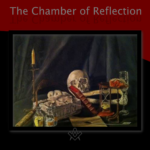 A detailed look at the Chamber of Reflection: A Revitalized and Misunderstood Masonic Practice. |
 Exploring the origin and symbolism of Faith, Hope and Charity |
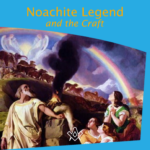 The Noachite Legend and the Craft What is it to be a true Noachidae, and what is the Noachite Legend and the Craft ? |
 In Masonic rituals, Jacob’s ladder is understood as a stairway, a passage from this world to the Heavens. |
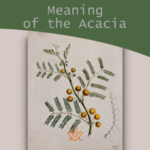 What is the meaning of the Acacia and where did it originate ? |
 What is the connection with the Feasts of St John and Freemasonry |
 The Forget-Me-Not and the Poppy - two symbols to remind us to 'never forget' those who died during the two World Wars. |
 Biblical history surrounding the two pillars that stood at the entrance to King Solomon's Temple |
 Is there a direct link between Judaism and Freemasonry? |
 The symbolism of the beehive in Masonry and its association with omphalos stones and the sacred feminine. |
 The Wages of an Entered Apprentice |
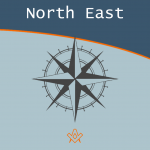 An explanation of the North East corner charge which explores beyond one meaning Charity - |
 A brief look at the origins of the two headed eagle, probably the most ornamental and most ostentatious feature of the Supreme Council 33rd Degree Ancient and Accepted (Scottish ) Rite |
 A Muslim is reminded of his universal duties just as a Freemason. A Masonic Interpretation of the Quran's First Two Chapters |
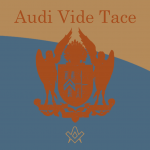 The three Latin words -{Listen, Observe, Be Silent}. A good moto for the wise freemason |
masonic knowledge
to be a better citizen of the world
share the square with two brothers

click image to open email app on mobile device

